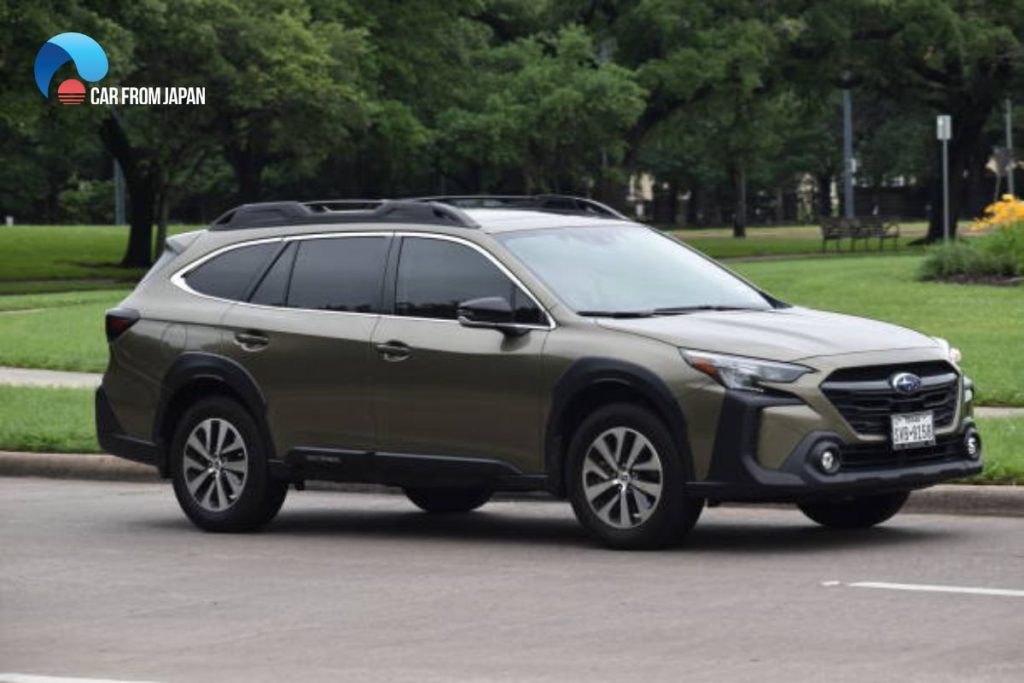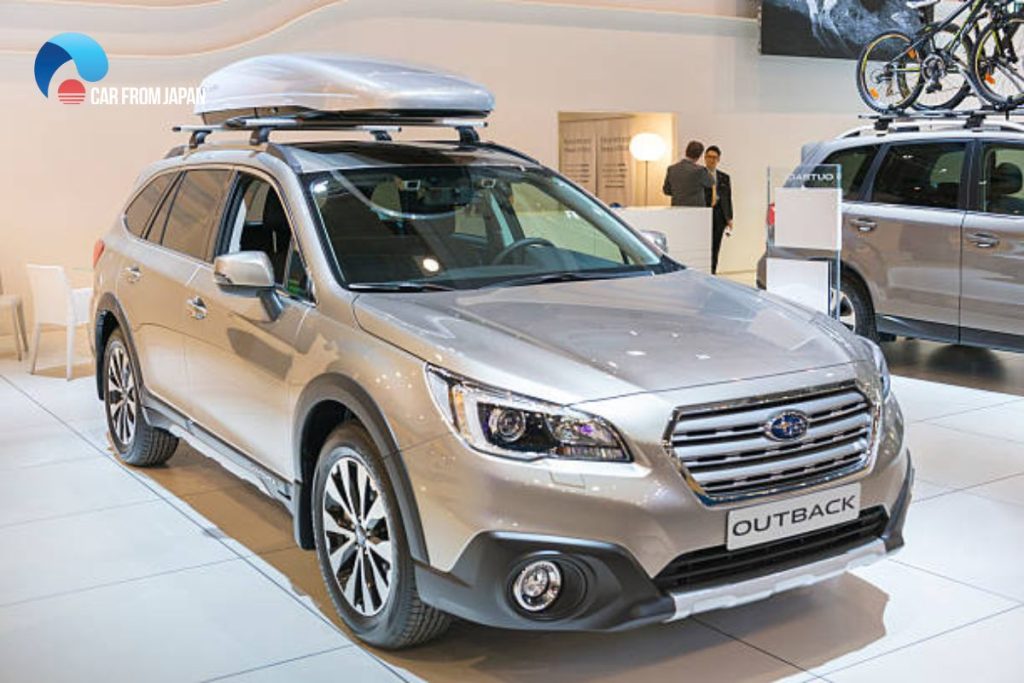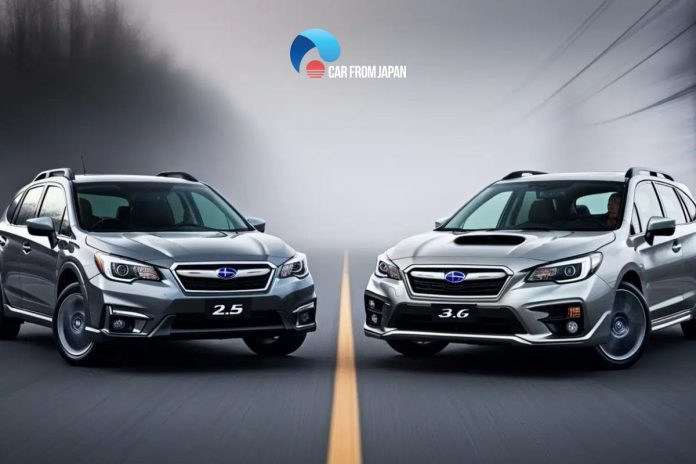The Outback is a popular car that people love for its cargo hauling capacity and ability to perform in all weather conditions. However, when it comes to powertrains, the choice between the 2.5-liter and 3.6-liter engines can be a head-scratcher. Is there any difference between the Subaru Outback 2.5 vs 3.6? The article below will help you find the answer:
Contents
Subaru Outback 2.5 vs 3.6 Engine: What Are They?
You can call the Outback an upgraded Legacy wagon that can excel as a real SUV, thanks to its 8.7 inches of ground clearance that can put any SUV to shame.
The 2.5 and 3.6 engines are simply what they seem to be – two engine options for the Outback model. Both versions provide a good fuel economy, but they might not be the best choice when you are looking for superb handling and fun driving:
- The 2.5-liter engine is the standard offering, delivering a balance of fuel efficiency and power. It produces 182 horsepower and 176 lb-ft of torque, making it suitable for daily driving and light off-roading. Paired with a continuously variable transmission (CVT), it achieves an EPA-estimated 26 mpg city and 33 mpg highway.
- For those seeking more power, the 3.6-liter engine is available. This larger engine generates 256 horsepower and 247 lb-ft of torque, providing quicker acceleration and more confident passing power. It also comes standard with a CVT and achieves an EPA-estimated 20 mpg city and 27 mpg highway.
Read more: Subaru Forester vs. Outback: Head to Head
The Variances Between Subaru Outback 2.5 vs 3.6 Models
Apart from the obvious engine type differences, there are some other factors to weigh in when comparing Outback 3.6 vs 2.5.

Trims & price
The 2.5i and 3.6R are available in several trims, and their prices also vary according to the engine performance and trims.
The 2.5 engine model comes in four trim levels – 2.5i, 2.5i Premium, 2.5i Limited, and 2.5i Touring. On the other hand, the 3.6 engine version comes in two trims – 3.6R Limited and 3.6R Touring.
The basic 2.5i is less than $26,000 while the 2.5i Touring (the highest trim in the category) is just shy of $36,500. The 3.6R Limited costs around $35,395 while the Touring version is available within $39,000.
Exterior & Interior
Comparing the Touring version of Subaru Outback 2.5 vs 3.6, you will not find much difference between them. They have 18-inch wheels, low-profile roof rails, and lower body cladding.
The interior has some luxury features, including Java Brown leather-trimmed seating surfaces, piano-black interior trim, heated steering wheel, and more.
Although the Outback lacks the extra height of a normal SUV, there is enough headroom, even with a sunroof, and the inside is big and pleasant, with seating for five adults.
In the Premium and 3.6R, the seats are big and comfortable, with eight-way front seat power adjustment.
Once you get acclimated to the distraction of the enormous Subaru’s EyeSight box at the top of the windscreen, there’s a decent view all around.
That is not a criticism; it is a possible life-saver and hence must be present. Hopefully, it will be smaller in the future.
The maximum cargo area volume ranges from 512 liters when the rear seatbacks are in position to 1801 liters when they are folded.
The spare wheels are full-sized, measuring 17 inches in the 2.0D and 18 inches in all other variants. The key fob on all versions has an automated boot release button.
Performance of Subaru Outback 2.5 vs 3.6
The 2.5L engine is not a bad choice due to the decent power generation. However, the CVT is a bummer that creates a strange tremble when you cross the fake shift points. It almost feels like the transmission has been broken.
On the contrary, the Subaru 3.6 engine engine performs in a quieter and smoother fashion and with more power. It produces 3 to 4 mpg less mileage than the 2.5 version.
However, trading it for the 2.5L just for this slight mileage difference is not worthwhile.
If you have a tight budget, the basic trim of 2.5L is the best choice, but the 3.6R Limited and Touring are the better options in terms of performance and driving experience.
The 2.5i Premium trim is another practical option since it combines a budget-friendly price with some premium features.
You will get the Subaru Starlink safety and security system, driver assistance technology, blind-spot detection, and some other great features.

Safety features
Subaru’s Vehicle Dynamics Control (VDC) system, which includes ABS brakes with electronic brakeforce distribution and brake assist, electronic stability control, traction control with limited slip device, and active torque vectoring system, is standard on all Outback variants.
Standard features include halogen daytime running lights, hill hold, an automatic parking brake, and a reversing camera.
Vision Assist features such as blind spot monitoring, lane change assist, high beam assist, auto-dimming rear view mirror, and rear cross traffic alert are new with the upgrades for the two Premium variants and the 3.6R.
If these precautions fail to prevent a collision, there are collision protection features such as seven airbags, whiplash reduction seats, safety pedals, and ISOFIX child seat anchor hooks on the outside rear seats.
FAQs on Subaru Outback 2.5 vs 3.6
Is the 2.5 I Subaru engine reliable?
In general, a Subaru 2.5 engine may go between 250,000 and 300,000 miles before requiring substantial vehicle maintenance or repair.
Given that the average driver travels roughly 14,000 miles per year, a Subaru 2.5 engine might potentially last for more than two decades.
How long does a Subaru Outback 3.6 engine last?
And, considering America’s fascination with road trips, it’s no wonder that the Outback is frequently listed among the finest cars to travel from the Great Smoky Mountains to the Grand Canyon.
All of this driving takes its toll, but if properly maintained, the Outback can last drivers up to 300,000 miles.
Do Subaru 2.5-liter engines have head gasket issues?
Head gasket failure on naturally aspirated 2.5L Subaru engines can occur due to detonation or pre-ignition.
Due to increasing cylinder pressures, owners of turbocharged versions are more likely to face this sort of failure.
What are the 2019 Subaru Outback 3.6r problems?
Cracked windshields, high battery depletion, and steering wobbles are all common issues with the 2019 Subaru Outback.
Overall, these flaws are modest in comparison to many other SUVs on the market, resulting in cheaper maintenance costs.
What is the fuel consumption of a 2.5 cc Subaru Outback?
The fuel usage from the 65-liter tank is listed at 8.0 liters/100km, and it runs on regular unleaded (we got 8.2). It comes as no surprise that our test Subaru Outback Premium is similar to the Subaru Liberty.
Check out this video from Realistick to learn more about other Subaru Outback comparisons!
Subaru Outback 2.5 vs 3.6 – Which One Should Be Your Choice?
It always depends on your personal preferences. The 2.5i Premium is a good choice but you should go for the 3.6 Touring if money is not a problem.
Consider your typical driving conditions and needs. Do you frequently encounter hilly terrain or tow a trailer? The 3.6-liter might be a better fit. If you primarily drive in urban areas and prioritize fuel efficiency, the 2.5-liter will likely suffice.
Ultimately, testing driving both engine options is the best way to determine which one feels right for you. Experience the difference in power and handling firsthand to make an informed decision.
For more car comparisons, follow Car From Japan today!




At the end of 2019 I had a loan 2.5 Premium for 2 days from a dealer as they prepared my new 3.6R (I’d already had a 2010 3.5 which was a great owning experience).
The 2.5 was fine for around town and without much load to carry around. It would suit a majority of people I think.
But the 3.6 is a different beast altogether.
The 2019 3.6 is heavier than my old 2010 but still has slightly improved mileage. The CVT is fine if you bother to learn to get the best from it (using S and S# modes and paddle shift is the clue here).
And many times on a 100-110 kph run we’ve manage to just dip below 7 litres per 100kms. For a trip we can safely bank on low to mid 7’s